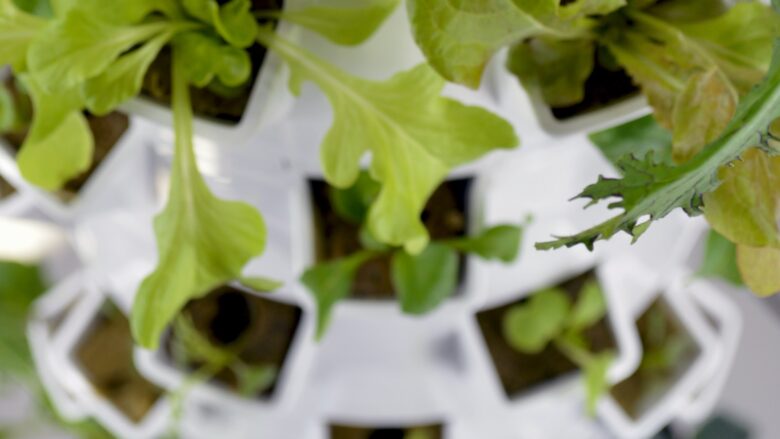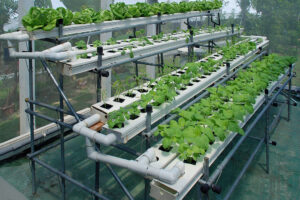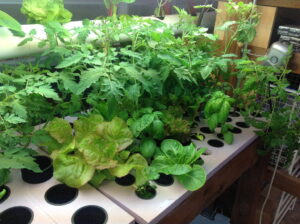Welcome to the fascinating world of hydroponics! If you’ve taken the leap into growing plants without soil, you know that it offers numerous advantages. Hydroponics allows you to cultivate a thriving garden in limited space, conserve water, and even achieve faster growth rates. However, as with any growing method, it’s not without its challenges. One of the key factors in successful hydroponic gardening is maintaining the perfect nutrient solution for your plants. From nutrient deficiencies to imbalances in pH levels, there are common hurdles that every hydroponic enthusiast encounters along the way. But fear not! In this article, we will provide you with top-notch tips and troubleshooting solutions, empowering you to overcome these obstacles and unlock the full potential of your hydroponic garden. So grab your nutrient solution tester and get ready to learn the secrets of successful hydroponic nutrient management!
Differentiating Between Macro and Micronutrient Imbalances
When it comes to hydroponic nutrient solutions, understanding the difference between macro and micronutrient imbalances is crucial for maintaining optimal plant health. Macro nutrients are the primary nutrients that plants need in larger quantities, while micronutrients are required in smaller amounts. A lack or excess of these nutrients can lead to various issues, so being able to identify and address these imbalances is essential for a successful hydroponic system.
Macro Nutrient Imbalances:
- Nitrogen (N): Lack of nitrogen can result in stunted growth and yellowing of leaves, while excessive nitrogen can lead to excessive vegetative growth with little to no fruiting.
- Phosphorus (P): Insufficient phosphorus can cause poor root development and delayed flowering, while excess phosphorus can lead to nutrient toxicity and hinder nutrient uptake.
- Potassium (K): A deficiency in potassium can result in weak stems and reduced fruit quality, while an excess of potassium can lead to ions imbalance and nutrient lockout.
Micronutrient Imbalances:
- Iron (Fe): A lack of iron can cause yellowing between veins on new leaves, while excessive iron can result in nutrient toxicity and interfere with other mineral uptake.
- Zinc (Zn): Insufficient zinc can lead to malformed leaves and stunted growth, while an excess of zinc can cause nutrient imbalances and inhibit root development.
- Manganese (Mn): A deficiency in manganese can cause interveinal chlorosis and necrosis, while an excess of manganese can result in reduced uptake of other essential nutrients.
By being able to identify the symptoms associated with macro and micronutrient imbalances, hydroponic growers can take appropriate action to rectify these issues. Regular nutrient monitoring and adjustment is necessary to ensure a well-balanced hydroponic nutrient solution, ultimately leading to healthier and more productive plants in your hydroponic system.
Analyzing pH Levels and Adjusting Nutrient Solution
Hobbyists and enthusiasts of hydroponic gardening understand the importance of maintaining proper pH levels in their nutrient solutions. Analyzing pH levels is an essential step in ensuring optimal plant growth and preventing nutrient deficiencies or toxicities. By monitoring and adjusting the pH, gardeners can create an ideal environment for their plants to thrive in their hydroponic systems.
One common problem that growers encounter is an imbalanced pH level in their nutrient solutions. A pH that is too high or too low can lead to poor nutrient uptake and stunted growth. To analyze pH levels, gardeners can use pH testing kits or digital meters specifically designed for hydroponics. Regular monitoring should be conducted, ideally once or twice a week, to track any fluctuations and make necessary adjustments.
Once pH levels are measured, adjustments can be made to bring the nutrient solution to the optimal range, which is typically between 5.5 and 6.5. To raise the pH, gardeners can add small amounts of pH-up solutions like potassium hydroxide. Conversely, to lower the pH, pH-down solutions such as phosphoric acid or citric acid can be used. It’s important to make these adjustments gradually to avoid drastic changes that could stress the plants. Regular monitoring and fine-tuning allow gardeners to maintain stable pH levels, leading to healthy and vigorous plants in their hydroponic setups.
Addressing Algae Growth and Maintaining Nutrient Solution’s Sterility
One of the most common challenges faced by hydroponic growers is the growth of algae in their nutrient solution. Algae can quickly take over and choke the roots of your plants, hindering their growth and nutrient uptake. To address this issue, there are a few effective strategies that can help you maintain sterility and keep algae growth at bay.
1. **Light management**: Algae thrive in the presence of light, so reducing their exposure is crucial. Consider using opaque containers for your nutrient solution or covering them with a light-blocking material. Additionally, positioning your hydroponic system away from direct sunlight or using grow lights strategically can limit algae growth.
2. **Regular monitoring and maintenance**: Keep a close eye on your nutrient solution for any signs of algae growth. If you spot any, it’s essential to act swiftly. Regularly check and clean your system’s components, such as reservoirs, tanks, and pipes, to prevent algae from establishing a foothold. Regular water and nutrient solution changes can also help maintain sterility and disrupt algae growth cycles.
3. **Use of algaecides and beneficial bacteria**: In more severe cases, where algae growth is persistent, the use of algaecides can be considered. Algaecides are chemicals that help control and eliminate algae from your nutrient solution. However, it’s important to choose products that are specifically labeled for hydroponic use to avoid harming your plants. Alternatively, introducing beneficial bacteria, such as Bacillus subtilis, into your system can outcompete and inhibit algae growth naturally, promoting a healthier environment for your plants.
By adopting these strategies and staying proactive in preventing algae growth, you can ensure that your hydroponic nutrient solution remains sterile and your plants thrive without competition from unwanted intruders. Remember, maintaining a clean and well-maintained system is the key to successful hydroponic growing.
Identifying and Rectifying Nutrient Deficiencies
When it comes to your hydroponic nutrient solutions, encountering common problems is inevitable. However, by staying vigilant and understanding the signs of nutrient deficiencies, you can quickly rectify any issues and ensure healthy plant growth. Here are some tips and troubleshooting techniques to help you identify and solve these nutrient-related problems:
1. Visual Inspection: The first step in identifying nutrient deficiencies is to closely observe your plants. Look out for specific symptoms such as yellowing leaves, stunted growth, or brown spots. Each nutrient deficiency manifests itself differently, so familiarize yourself with the visual cues associated with different nutrients to pinpoint the problem accurately. It’s also essential to keep in mind that certain deficiencies can resemble one another, so don’t jump to conclusions.
2. Conduct Regular Water and Soil Tests: Maintaining a comprehensive testing routine is crucial for preventing and rectifying nutrient deficiencies. Regularly analyzing the water and soil in your hydroponic system will provide valuable insights into the nutrient levels and pH balance. By identifying any imbalances early on, you can tailor your nutrient solutions accordingly and ward off potential deficiencies before they can harm your plants.
3. Adjust Your Nutrient Solution: If you have successfully identified a nutrient deficiency, the next step is to take action. Adjusting your nutrient solution is often the most effective way to address the issue. Depending on the deficiency, you may need to increase or decrease the concentration of specific nutrients in the solution. Carefully follow the instructions on your nutrient blend packaging or consult with hydroponic experts for precise recommendations. Remember, maintaining a balanced and optimal nutrient solution is key to promoting healthy plant development.
By staying observant and implementing these troubleshooting techniques, you’ll be well-equipped to tackle nutrient deficiencies in your hydroponic system. Remember, prevention is always better than cure, so regular monitoring and adjustment are essential for consistent and flourishing plant growth.
Resolving Salt Accumulation and Maintaining Electrical Conductivity
One of the common challenges faced by hydroponic growers is the accumulation of salt in nutrient solutions, which can lead to imbalances and hinder plant growth. It is crucial to address this issue promptly and maintain optimal electrical conductivity (EC) levels for the plants to thrive. Here are some effective tips and troubleshooting techniques to resolve salt accumulation and ensure a healthy hydroponic system:
1. Regular monitoring and flushing:
Keep a close eye on the EC levels of your nutrient solution by regularly testing it using an EC meter. Once you notice a significant increase in conductivity, it is time for a thorough flush. Drain and replace the entire nutrient solution with fresh water, removing any accumulated salts. Repeat this process every two to three weeks to prevent salt buildup.
Troubleshooting tip: If flushing alone doesn’t resolve the issue, consider increasing the frequency of your flushes or adjusting the concentration of nutrient solution to maintain balanced EC levels.
2. Balanced nutrient uptake:
Ensure that your plants have adequate access to essential nutrients without excessive accumulation. Adjust the nutrient solution concentration according to the specific requirements of your plant species and growth stage. Use high-quality fertilizers with a balanced ratio of macronutrients and trace elements to minimize salt buildup.
Troubleshooting tip: If your plants show signs of nutrient deficiencies or excesses, such as stunted growth or yellowing leaves, consider adjusting the nutrient solution composition or consulting a hydroponic expert for tailored advice.
3. Proper pH maintenance:
Maintaining the correct pH range for your hydroponic system is integral to prevent salt accumulation. Most plants thrive in a slightly acidic environment, so regularly monitor and adjust the pH of your nutrient solution. pH levels that are too high or too low can disrupt nutrient availability and exacerbate salt accumulation issues.
Troubleshooting tip: If pH fluctuations persist despite your efforts, consider using pH buffering solutions or additives to stabilize the pH levels and promote optimal nutrient uptake.
In the captivating realm of hydroponics, nutrient solutions hold the key to unlocking the verdant potential of our beloved plants. As we bid adieu to this comprehensive guide on solving common problems with these solutions, we find ourselves armed with a plethora of knowledge and a renewed sense of confidence. With every challenge encountered, our troubleshooting skills have been honed, transforming us into adept gardeners capable of nurturing impeccable hydroponic systems.
Just like the rhythmic dance between plant and water, we have learned to harmonize the delicate balance within the nutrient solution. From addressing nutrient deficiencies to battling the invasive forces of algae and pH fluctuations, we have explored myriad solutions, unveiling a treasure trove of tips to overcome obstacles that might have once stunted our hydroponic adventures.
In this journey of unraveling potential problems, we have discovered that attentiveness, precision, and a steadfast commitment to monitoring are the pillars of success in hydroponics. Our understanding of the intricate relationship between plants, nutrients, and water has deepened, empowering us to fine-tune our growing systems and optimize results beyond our wildest dreams.
Yet, as we conclude this immersive exploration of hydroponic nutrient solutions, let us remember that nature is ceaselessly dynamic. Challenges may arise unexpectedly, but armed with our newfound knowledge, we are poised to embrace them fearlessly. We have, after all, developed a resilient mindset, ever-ready to adapt and innovate, ensuring our hydroponic endeavors will continue to flourish.
So, dear reader, let us venture forth with newfound confidence, equipped with the invaluable arsenal of tips and troubleshooting techniques acquired throughout this unraveling of common hydroponic problems. May your plants thrive, your yields flourish, and your journey in the realm of hydroponics be one of perpetual growth and boundless discovery.



